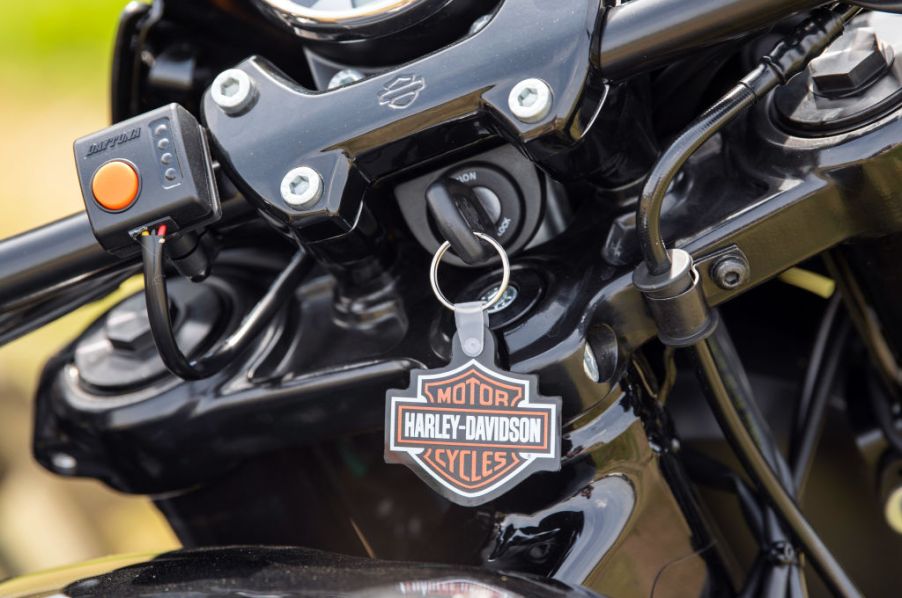
What is Killing Harley-Davidson Sales?
Harley-Davidson‘s sales continue to diminish it assesses the rest of 2019. Between decreasing interest in motorcycles and the threat of tariffs, the classic American motorcycle company is scrambling to drum up new business.
The company’s sales dropped 6% to $1.4 billion. In the last quarter, they delivered 69,000 bikes, 5% less than the same quarter last year. So what’s the culprit?
Tariffs for all
It’s hard to keep up with all the tariffs being imposed on the motorcycle industry. Currently, three major tariff situations plague the industry.
First, there’s the “Bikes for Beef” situation, which has been going on for years. The dispute between the U.S. and EU started because Europe refuses American beef. In retaliation, a U.S. Trade Representative proposed an odd 100% tax tariff on 50-250cc motorcycles made in the EU.
Many took it as a shot at Austrian manufacturer KTM AG. The tariff has been strenuously opposed by the AMA, MIC, and U.S. motorcycle manufacturers. Thousands of motorcyclist enthusiasts have contacted Congress trying to get this resolved.
Speaking of the EU, there’s a dispute over aircraft manufacturer subsidies that involves Boeing versus Airbus. In truth, the end result of this U.S.-versus-EU issue impacts 500-700cc motorcycles built in Europe along with parts and accessories. Those factions now face a 100% tariff that could damage KTM, who currently has nine motorcycles in the segment.
The impact on accessories and parts will affect all motorcycle manufacturers. Predictably, the EU is striking back. It’s creating its own list of products to tax including items like clutches, exhaust pipes, gearboxes, and silencers.
Finally, there’s a trade war with China that began in 2018 with a 10% tariff. President Trump said he’d increase this to 25% earlier this year. There was no update on the situation until May when he tweeted that the tariffs would go up on May 10. This proposal became formal on May 8, when it found its way into the Federal Register.
Millennials vs. older buyers
Some believe Millennials are to blame for Harley-Davidson’s sales woes (in addition to many other industries). The data suggests that in the case of the American motorcycle manufacturer, this may be true.
According to CNBC, a survey of American adults revealed a generational divide in how younger people view motorcycles as opposed to older people. Those from 21 to 34 years of age see buying a motorcycle as an easy transportation mode. Older buyers consider motorcycles to be “cool” and view them as a hobby.
The difference in views is huge. Millennials buy motorcycles for practical reasons and are more likely to purchase cheaper bikes. Harley-Davidsons aren’t the type of bikes Millennials buy. The average Harley-Davidson buyer is a married male in his early fifties with an income of around $90,000 a year. According to Forbes, the average starting cost of a Harley-Davidson is $19,289 to $28,089.
The future of Harley-Davidson
America’s classic motorcycle company has taken measures to offset diminishing sales. Harley-Davidson shifted some of its manufacturing to Thailand to avoid some tariff issues. It can also craft bikes closer to Asian and European fans whose enthusiasm is stronger.
Recently, Harley-Davidson got permission to ship motorcycles built in Thailand to the EU. The approval will cut down on the tariffs the company must pay. Unfortunately, the process to get that permission took a bit longer than Harley-Davidson hoped. In the last quarter, its profit dropped a whopping 19% to a mere $195.6 million.
Harley-Davidson has launched an aggressive plan to draw two million new riders to the brand within the next 10 years. Aside from setting up riding schools nationwide, it’s releasing a new electric bike called “Livewire.” In January, the company showed off two electric concept motorcycles to engage consumer interest.
It’s the start of a new era at the company whose ticker symbol is HOG. The new electric LiveWire will debut in 2019 at specially-selected dealerships in the U.S. and Europe through the year’s end. The bike’s price will be released in January 2020.


